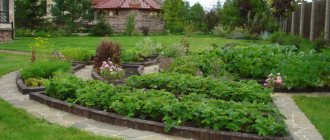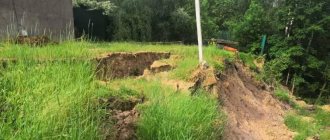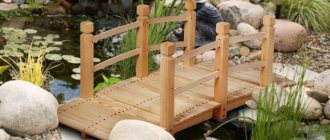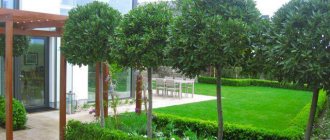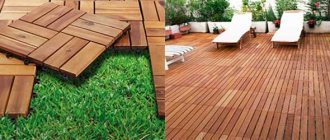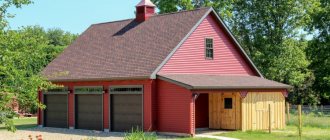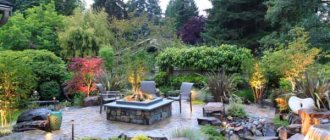With the increase in the number of cars in cities and, as a result, the need for parking, authorities began to think about increasing environmental friendliness and preserving natural sites.
Dear readers! The article talks about typical ways to resolve legal issues, but each case is individual. If you want to find out how to solve your particular problem , contact a consultant:
+7 (499) 938-81-90 (Moscow)
+7 (812) 467-32-77 (Saint Petersburg)
8 (800) 301-79-36 (Regions)
APPLICATIONS AND CALLS ARE ACCEPTED 24/7 and 7 days a week.
It's fast and FREE !
The number of green areas can be increased by so-called eco-parking lots, which combine grass and modern materials, and parking a car does not harm such areas at all, since the loads are evenly distributed over the ground and do not damage the root system of the grass.
And the features of green parking (eco-parking) in 2022 are an extremely interesting topic, which in Russia is just beginning to spread in urban infrastructures.
Preparation of materials for construction
The finished eco-parking cover in cross-section resembles a layer cake, the bottom layer of which is natural soil, and the top layer is a lawn lattice. The grid cells are filled with fertile soil with lawn grass seeds. Let's consider the materials that need to be purchased to construct this “pie”.
The order of layers, as well as their thickness and composition, may have other options depending on the type of soil and construction tasks
Lawn gratings are the main component visible on the surface, so increased demands are placed on them. When purchasing, it is important to consider both the technical properties of the material (plastic) and the aesthetically attractive appearance. The honeycomb-like material comes in green or black to match the color of the grass or soil. It must be durable, moisture- and heat-resistant, moderately elastic, easy to cut, and resistant to chemicals.
The cells of the lawn lattice differ in shape: they can be hexagonal (resembling a honeycomb), square, rectangular, round and even oval
Geotextiles are useful when installing a drainage layer. A durable canvas made of polymer threads filters moisture and serves as a separation barrier between different layers, most often between a crushed stone base and a sand fill.
The cost of geotextiles depends on its qualities and raw materials for production. For example, 1 m² of the cheapest recycled material costs approximately 6 rubles, and white needle-punched textile without impurities costs 25 rubles
Crushed stone or gravel, as well as sand, are necessary for the construction of a drainage layer, the so-called sand-gravel cushion. It serves to level the base for laying the lawn grate and distribute the load evenly. During rains, the top layer prevents moisture from accumulating on the surface, thereby protecting the parking lot from waterlogging and the formation of puddles.
Even a light load on a gravel bed does not exclude a responsible approach to its equipment: the lawn cover will last much longer if you use only high-quality material, and carefully compact and level the layers of crushed stone, gravel and sand
To install a decorative top layer, you will need fertile soil and lawn grass seeds. Greens for sowing can be varied, including frost-resistant or diluted with seeds of low-maintenance flowers.
Recent Entries
Lilac perennials that are beautiful, compact and do not crowd out other plants Why when buying seedlings you should not take the sellers’ word for it and how to determine the age of the plant using 3 signs Tomato seedlings have turned purple or whitish: why the color has changed and how to save the plants
The cost of a 5-kilogram bag of seeds ranges from 600 to 1,400 rubles. The price depends on the quality of the herbs included in the mixture. For example, seeds of drought-resistant or shade-tolerant plants are more expensive
Criteria for choosing a geogrid for parking
Before buying a geogrid for parking, you should study in detail the characteristics of the product and the appropriateness of its use for a particular case. First of all, you need to decide on the material of manufacture. When choosing a concrete grating for parking, you don’t have to worry about the strength, durability and load-bearing capacity of the structure, which can even withstand rocket carriers and tank tractors. But if preference is given to a polymer product, some points should be taken into account.
In order for the structure to meet the stated performance requirements, it must be made of 100% polyethylene. However, the material comes in two types: high pressure HDPE and low pressure LDPE. The first option has good rigidity, but low ductility, especially at low temperatures. The second type is more flexible. The material reacts significantly less to temperature changes, so it is more preferable for constructing lawn parking lots.
When choosing a material for creating an eco-parking area, you should take into account the load-carrying capacity of the lawn grate.
Some manufacturers are trying to reduce the cost of products, while making their production easier, by adding various impurities to the molding composition, which degrade the quality of the material. Such lower quality products include polypropylene grating. The material has weak resistance to ultraviolet radiation, which leads to rapid aging of the product. In addition, such gratings are very fragile, especially at low temperatures.
The next criterion is the load-carrying capacity of the lawn grate for paths and parking. This indicator depends on the height and thickness of the walls of the product. The grating intended for creating parking lots must have a height of at least 50 mm. If this value is less, then the product is suitable for an area with light load. The thickness of the cell walls in this case should be at least 5 mm. If a lawn parking lot is being installed, the cell size should be as large as possible, as this will facilitate successful rooting of the grass.
Layout diagram of grass parking layers.
Instructions for setting up eco-parking
Like any important event, the construction of a parking lot begins with planning, material calculations, budget calculations and choosing a favorable time.
Stage #1 – calculation of area and marking of the site
When choosing the most suitable parking place, do not forget about access roads and necessary maneuvers, as well as the possible number of vehicles. By correctly calculating the parking area, you can make an accurate estimate, and therefore save on the purchase of materials.
After the paperwork and necessary purchases, you can start working. First, you should remove the top layer of natural lawn (if a plot of untouched land is taken for parking). As a result, we get a shallow hole, the depth of which is equal to the height of the future “layer cake”. To do this, you need to add the height of the gravel-sand cushion and the height of the lawn grid - these are two significant layers. Geotextiles are so thin that their parameters have virtually no effect on the overall height.
Eco-parking planning can also be used to make partial changes to landscape design. Along with the construction of a parking lot, you can improve the access road or update the sidewalk leading to the house
Stage #2 – installation of a gravel-sand cushion
We fill the bottom of the hole with crushed stone. If the soil is too wet or clayey, the base can be reinforced with a piece of geotextile so that the layer of crushed stone (or gravel) does not “walk” and is not pressed into the soil. The height of the bottom layer is about 20 cm, but much depends on the unevenness of the bottom. If holes appear when removing the turf, it is better to fill them with sand. The more unevenness, the thicker the gravel base.
Even if the layers of gravel and sand are not very thick, a lot of material will be required. To save money, you can rent a truck and deliver sand and gravel (crushed stone) in bulk rather than in bags
We fill the layer of crushed stone tightly with sand, not forgetting to compact it and water it, ensuring strong shrinkage. If the crushed stone is large, you can lay another layer of geotextile to prevent the sand from falling down. The sand layer is 10-15 cm. We again lay geotextiles on top of the sand cushion. As a result, we obtain a smooth, dense canvas ready for laying lawn gratings.
Stage #3 – laying lawn gratings
This is a fairly simple job, accessible even to beginners. The size of the grid modules allows you to start installation in any convenient place. If there are trees growing in the parking area or other decor is planned (this also happens), it is better to start from this place.
If an obstacle occurs at the junction of several modules, it is enough to cut off unnecessary parts of adjacent elements to obtain a hole of the required size
Place the first module on the geotextile, install the second module on it, and so on. The elements are fixed to each other using grooves. Excess material around the edges is cut off with any cutting tool. Considering that cars are a dynamic load, the modules can be secured in the ground with L-shaped pins, especially along the perimeter of the site.
One of the quick, but incorrect ways to lay a lawn lattice: the modules are placed directly on unprepared soil. There is a possibility of waterlogging, and such parking is mechanically unstable
Stage #4 – backfilling the soil
The final stage is the distribution of fertile soil into cells. In order not to spend a long time with sowing lawn grass, it is mixed with soil before backfilling. Various decoration options are possible. For example, you can sow daisies or other low, unpretentious flowers in a checkerboard pattern. This is especially true for parking lots, which are often used for other purposes - for games or as a barbecue area.
One of the original and beautiful options for the perimeter of an eco-parking or recreation area: combining paving stones with lawn grass, decorated with fresh flowers
Review of foreign and domestic manufacturers of lawn gratings: product prices
Today you can buy lawn parking grates of both foreign and domestic production. Among the concrete structures, one can highlight the products of the Russian North-Western Road Company, which are manufactured using the vibrocompression method. The products are used in arranging courtyards, sidewalks, parks, and strengthening slopes. The size of the modules is 840x420x90 mm. Price for 1 m² of material – 450 rubles. No less famous is the Meba lawn lattice from the Melikonpolar company. Products are produced in sizes 596x396x80 mm. The cost of the material is 650 rubles/m².
The Erfolg plastic lawn grate from a German company is very popular among buyers. The product has the following characteristics:
- module size – 400x600x40 mm;
- weight of one element – 900 g;
- maximum load – 80 t/m²;
- operating temperature range – from -50 to 60ºС;
- deformation under load is about 0.1 mm.
You can buy a lawn grate from a German manufacturer for 550-700 rubles/m².
When choosing a lawn grate, you should give preference to well-known manufacturers.
An equally well-known German company is Funke Kunststoffe, which produces certified plastic products from recycled materials - polypropylene/hydropropylene. The modules are produced in dimensions 330x330x38 and 640x330x38 mm, they are attached to each other using the hook-and-eye method. The products have a green tint. The cost of a geogrid is on average 500 rubles/m².
The Geo Lawn lawn grating is made of high-density polyethylene. The size of the cellular modules is 640x395x50 mm. The design can withstand loads of up to 270 tons. Available in black and green. The price of 1 m2 of product is 450 rubles.
The Super lawn grate from the Ukrainian manufacturer is in good demand. Products are produced in sizes 630x430x50 mm, made of polyethylene. They can withstand loads of up to 250 tons. The cost of 1 m² is 400 rubles.
The Meba lawn grid produced by Melikonpolar is known for its quality and reasonable price.
Combined platform with paving stones
To somehow diversify the green lawn, you can use paving stones. For example, the German company Hubner-Lee offers a special TTE eco-parking system, in which the cells can be filled with both soil and paving stones. Bricks have water-permeable properties, and they also allow air to pass through.
Despite the porous structure of the bricks, which allows them to “breathe” and allow moisture to pass through, the paving stones are strong enough to withstand the weight of a car
Using materials from one manufacturer allows you to quickly install paving stones: the bricks are simply inserted into the grooves and fixed using small internal ribs
One of the simplest options for eco-parking: the surface consists of alternating paving stones and lawn grass. The parking lot is stable, durable and decorative
It will be an excellent area for relaxation or tea drinking if a parking space suddenly turns out to be unnecessary. A bench, table or flower bed - and the parking lot turns into a cozy corner
The construction of the eco-parking has ended, but you have a large number of lawn gratings in stock? Excellent - they will be useful for creating sidewalk paths or a barbecue area
The design of lawn gratings is so convenient and easy to use that they can even be used to create borders or delimit different zones
Concrete lawn grate: product features
This lattice is represented by a stamped concrete block. Stamping is performed by vibration pressing or casting. The cell dimensions of the concrete geogrid are 60x40x10 mm. The holes can be square or diamond-shaped. The structure is installed in the ground at a shallow depth. Drainage is laid under it, which protects the soil from excessive moisture.
The main advantages of concrete lawn grates:
- resistance to mechanical stress;
- increased strength:
- the thick walls of the product can withstand constant significant loads;
- long period of operation;
- a wide range of colors allows you to choose the appropriate shade for your landscape design;
- resistance to moisture, temperature changes and sunlight;
- the material is a good alternative to paving slabs;
- low cost compared to plastic analogues.
The lawn grid is easy to install and allows you to create a stable surface structure.
The disadvantages include the following indicators:
- significant weight of products, which complicates installation and requires the use of special equipment;
- thick walls that do not provide the opportunity to create a solid lawn, and this worsens the aesthetic appearance of the surface;
- small honeycomb size, which creates difficulties in rooting lawn grass.
On a note! Concrete geogrids are recommended to be installed on hard soils, where it is difficult to achieve complete drainage of water after precipitation.
You can buy a concrete lawn grate in a square or honeycomb shape. The first option is used to create areas with heavy vehicle traffic. Such structures can withstand loads of up to 400 tons. Honeycomb-shaped concrete gratings are used in the construction of bicycle paths, sidewalks, playgrounds and parking lots for cars.
Often, modular plastic geogrids are used to create driveways and garden paths.
